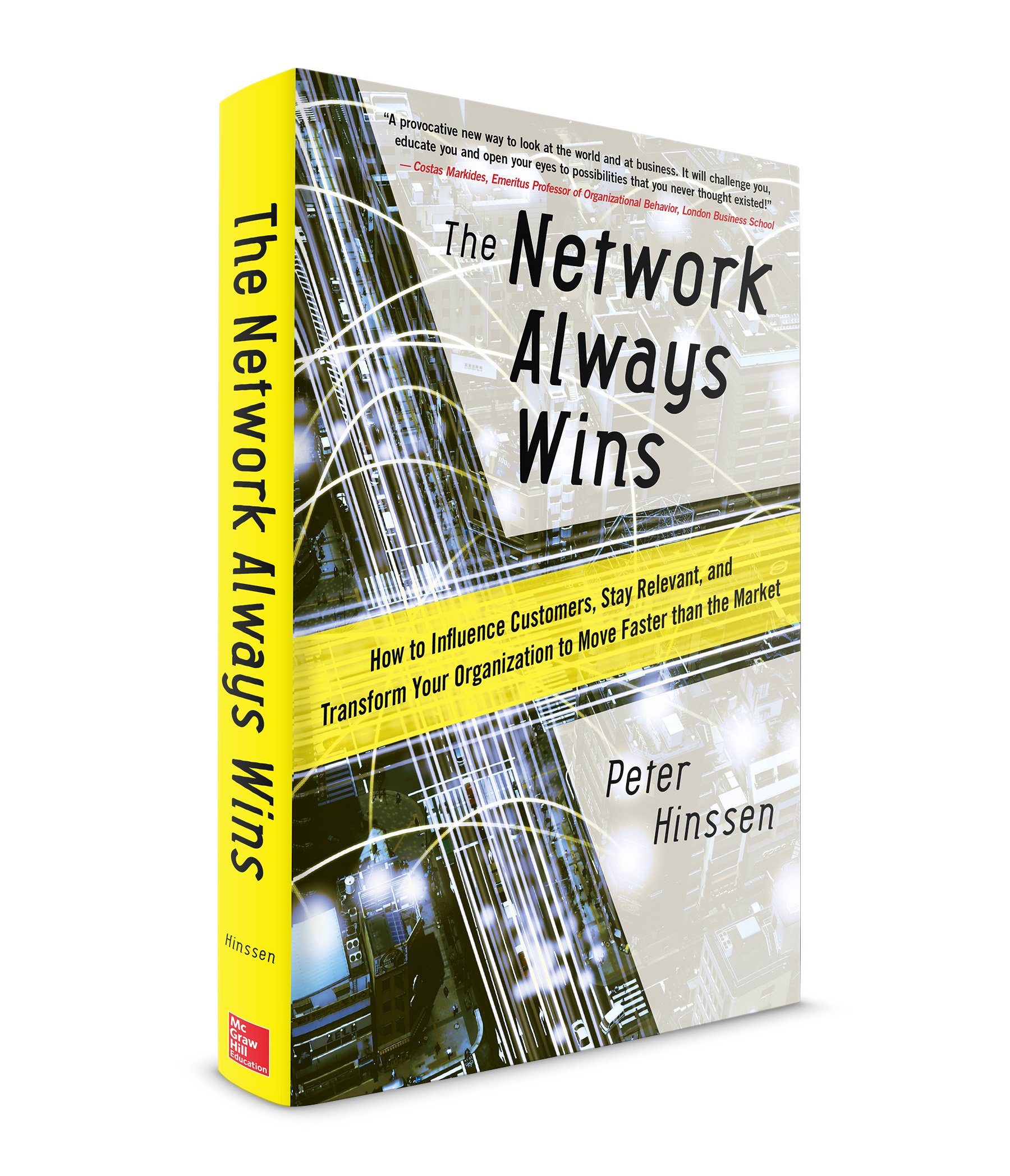Reinventing your business for a connected world

The digital revolution has given rise to a landscape where everyone is connected, here’s what you need to do differently in the world of networks: the latest in a series leading up to the announcement of the 2016 Management Book of the Year
By 2016 CMI Management Book of the Year shortlisted author Peter Hinssen
The Network Always Wins explores what it means to become a network organisation, and how to influence consumers who behave as active elements of a network, not passive targets of a market. We’ll examine what it takes to match the speed of network thinking, and how to transform your organisation to maintain its relevance in the age of networks.
But on a deeper level, this book is about much more.
This is a book about speed - about what happens when markets move faster than you can control, or even observe, so that you will have to move faster without either absolute visibility or absolute control.
This is a book about consumers - about the shift that takes place when they stop simply consuming and start interacting, and when markets stop being markets and become networks of intelligence.
But this is also a book about organisations - about what will happen when we have to adapt the inside of our companies to markets that are changing faster than ever before. We will have to adopt this network thinking inside our own organisations.

This is not a book that is meant to frighten you. It was written to make you more alert - to open your eyes to what is probably the biggest shift we’ve ever seen in society, the biggest shift ever to hit the world of commerce, and the biggest shift in how we build organisations.
This is really a survival guide designed to teach you the new rules of the land: about the new patterns, the new cultures, and the new behaviors, and how to reinvent your company after your market has flipped and turned network.
This is not a technical book.
Don’t expect any detailed discussions of the technical aspects of networks, the routing of TCP/IP packets, or the tweaking of 4G wireless routers. This is a business book.
We’ll dive into some physics and mathematics here and there - first, because the stories are really good, and second, because they will make you feel pretty good about yourself for having read a book with some equations in it.
But above all, this is a book about our world and what is happening all around us, a book on how we - and our children - can survive in a world in which information is ubiquitous.
We will have to figure out how to dismantle the old industrial structures that now form the pillars of our economy, and rethink how companies, organisations, and society function.
And perhaps the answer to understanding our future is right in front of our very eyes. We only have to gaze upon ourselves and observe the networks that we have built.
What I Got Wrong in The New Normal
I’ve become obsessed with S curves.
A typical S curve has two really interesting parts. At first, the movement is slow, but then it suddenly picks up and starts to rise exponentially. Think about the uptick in smartphone owners recently, or the number of users on Facebook. The speed increases and grows exponentially. There’s no stopping the momentum, and it promises to go on forever.
But then the magical moment happens, and a flip occurs. The S curve starts to slow down. Growth is still fast, but it’s moving in the opposite direction from the first half, and when we get into the second half, we see a stabilising factor where growth eventually tops off.
Many markets have followed this phenomenon. One of the best studies of S curves was done by Carlota Perez, technology expert and author. She applied these curves to the growth in railways, the automobile market, the Industrial Revolution, the rise of electricity, and the growth in computing power.
That’s what caught my attention.
I wrote The New Normal on the rise of digital and what happens when digital passes the halfway mark and becomes normality. In other words, this was digital’s path along the S curve.
In the beginning, when digital was still new, its growth was slow. Only the true nerds were hunched over primitive microcomputers like the Apple II, the Commodore 64, and the Atari.
Normal folks would look at them with a mixture of pity and contempt.
But then the market caught fire. The pace picked up, and suddenly everyone had a computer: first desktops, then laptops, and now tablets. And digital became normal. Older people still remember when digital was a meaningful adjective. Younger people don’t.
Everything is digital. Analog is the exception.
And then we get into the second part of the S curve, a world where we take digital for granted. Companies that don’t adapt become obsolete in a world that is governed by Google and Twitter, and where the breakneck speed of keeping up with digital is rapidly revealing the incredible slowness and immobility of some organisations.
The New Normal was a book about what happens when digital becomes Normal - about the flip to a digital world.
But it also got me hooked on S curves. And I now believe that this is much bigger than just digital. This is way beyond the world of iPhones, Spotify, and Facebook. Technology is just one example of markets that flip. Digital was just the appetiser.
The flip is a broad concept about what happens when markets start to move faster than companies.
In one sentence: this book is about how to survive the flip.
The Network Always Wins by Peter Hinssen is shortlisted in the Management Futures category of the 2016 CMI Management Book of the Year, in association with the British Library and sponsored by Henley Business School

Press & Media Enquiries
For more information or to request interviews, contact CMI's Press Team on 020 7421 2705 or email press.office@managers.org.uk


